Holywell became a market town in 1292, when King Edward I granted a charter to the Cistercian monks of Basingwerk Abbey for a weekly market and an annual three-day fair. The markets and fairs were held at the wider, lower end of High Street. The monks probably preached here at the Market Cross which remained in situ until at least the late 19th century, around the time that the indoor market was built behind the nearby Town Hall.
A photograph and text about The Market Cross.
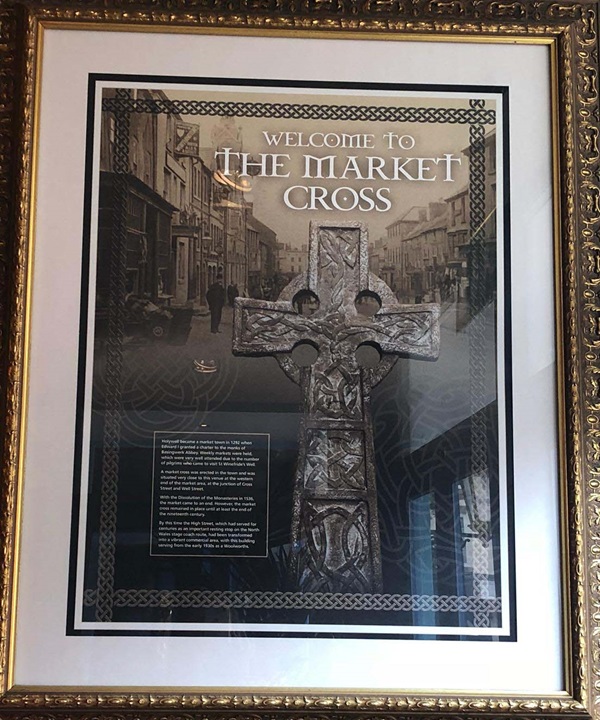
The text reads: Holywell became a market town in 1292 when Edward I granted a charter of monks of Basingwerk Abbey. Weekly markets were held which were very well attended due to the number of pilgrims who came to visit St Winifred’s Well.
A market cross was erected in the town and was situated very close to this venue at the western end of the market area, at the junction of Cross Street and Well Street.
With the Dissolution of the Monasteries in 1536, the market came to an end. However, the market cross remained in place until at least the end of the nineteenth century.
By this time the High Street, which had served for centuries as an important resting stop on the North Wales stage coach route, had been transformed into a vibrant commercial area, with this building serving from the early 1930’s as a Woolworths.
A plaque documenting the history of The Market Cross.
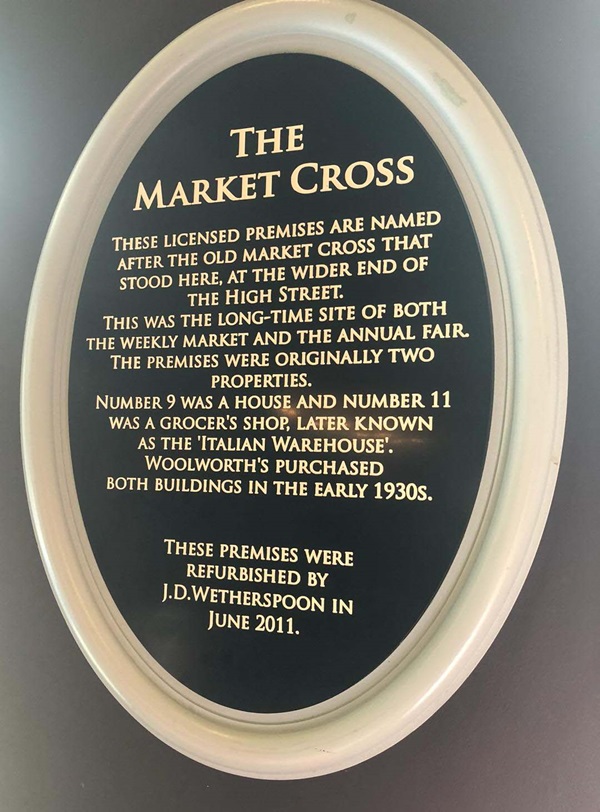
The plaque reads: These licensed premises are named after the old market cross that stood here, at the wider end of the High Street.
This was the long-time site of both the weekly market and the annual fair. The premises were originally two properties.
Number 9 was a house and number 11 was a grocer’s shop, later known as the ‘Italian Warehouse’.
Woolworth’s purchased both buildings in the early 1930s.
These premises were refurbished by J D Wetherspoon in June 2011.
Photographs and text about Ron Davies.
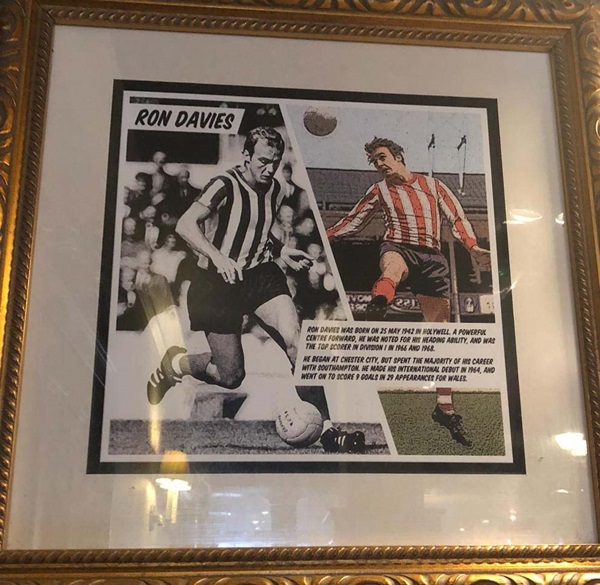
The text reads: Ron Davies was born on 25 May 1942 in Holywell. A powerful centre forward, he was noted for his heading ability, and was the top scorer in Division 1 in 1966 and 1968.
He began at Chester City, but spent the majority of his career with Southampton. He made his international debut in 1964, and went on to score 9 goals in 29 appearances for Wales.
A print and text about Thomas Pennant.
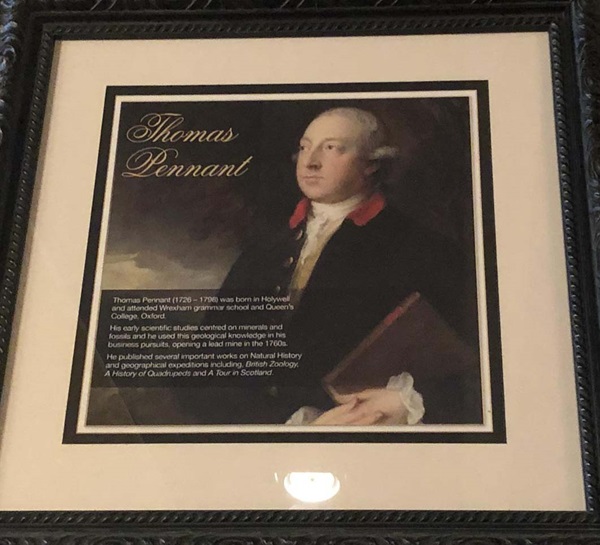
The text reads: Thomas Pennant (1726-98) was born in Holywell and attended Wrexham Grammar School and Queen’s College, Oxford.
His early scientific studies centred on minerals and fossils and he used this geological knowledge in his business pursuits, opening a lead mine in the 1760s.
He published several important works on natural history and geographical expeditions including, British Zoology, A History of Quadrupeds and A Tour in Scotland.
Photographs and text about Pen-y-Maes Windmill & The Greenfield Valley.
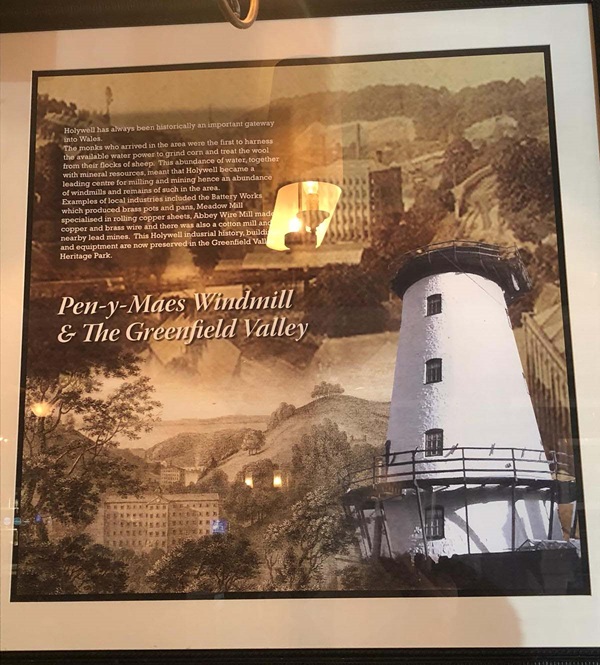
The text reads: Holywell has always been historically an important gateway into Wales.
The monks who arrived in the area were the first to harness the available water power to grind corn and treat the wool from their flocks of sheep. This abundance of water, together with mineral resources, meant that Holywell became a leading centre for milling and mining hence an abundance of windmills and remains of such in the area.
Examples of local industries included the Battery Works which produced brass pots and pans, Meadow Mill specialised in rolling copper sheets, Abbey Wire Mill made copper and brass wire and there was also a cotton mill and nearby lead mines. This Holywell industrial history, buildings and equipment are now preserved in the Greenfield Valley Heritage Park.
A photograph and text about Saint Winifred.
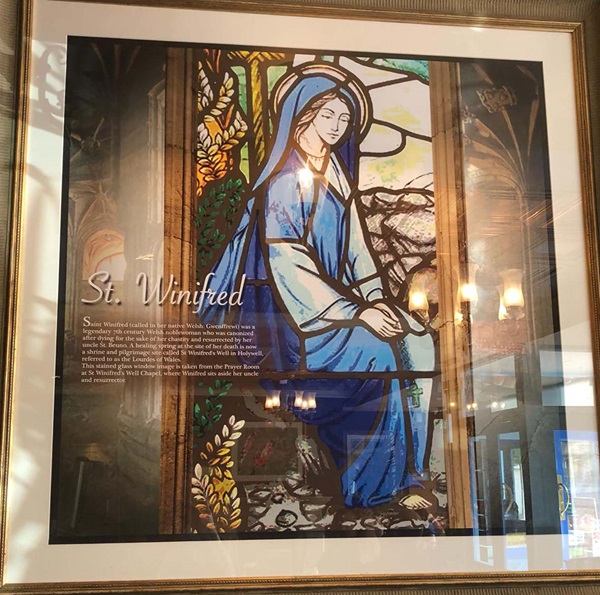
The text reads: Saint Winifred (called in her native Welsh: Gwenffrewi) was a legendary 7th century Welsh noblewoman who was canonized after dying for the sake of her chastity and resurrected by her Uncle St Beuno. A healing spring at the side of her death is now a shrine and pilgrimage site called St Winifred’s Well in Holywell, referred to as the Lourdes of Wales.
This stained-glass window image is taken from the Prayer Room at St Winifred’s Well Chapel, where Winifred sits aside her uncle and resurrector.
A photograph, illustrations and text about Flint Castle.
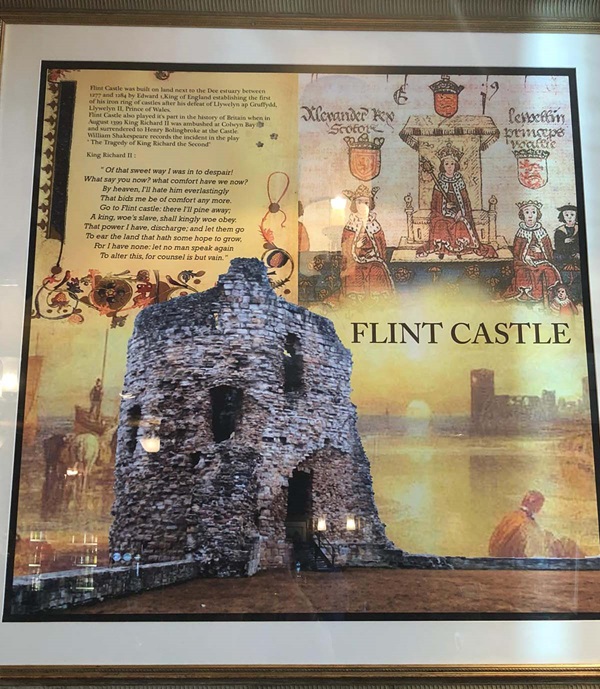
The text reads: Flint Castle was built on land next to the Dee estuary between 1277 and 1284 by Edward I, King of England establishing the first of his iron ring castles after his defeat of Llywelyn ap Gruffydd, Llywelyn II, Prince of Wales.
Flint Castle also played its part in the history of Britain when in August 1399 King Richard II was ambushed at Colwyn Bay and surrendered to Henry Bolingbroke at the Castle. William Shakespeare records the incident in the play The Tragedy of King Richard the Second.
King Richard II:
“Of the sweet way I was in to despair! What say you now? What comfort have we now? By what heave, I’ll hate him everlastingly
That bids me be of comfort any more.
Go to Flint castle: there I’ll pine away;
A King, woe’s slave, shall kingly woe obey.
That power I have, discharge; and let them go
To ear the land that hath some hope to grow,
For I have none: let no man speak again
To alter this, for counsel is but vain.”
A photograph and text about the Holywell Bank.
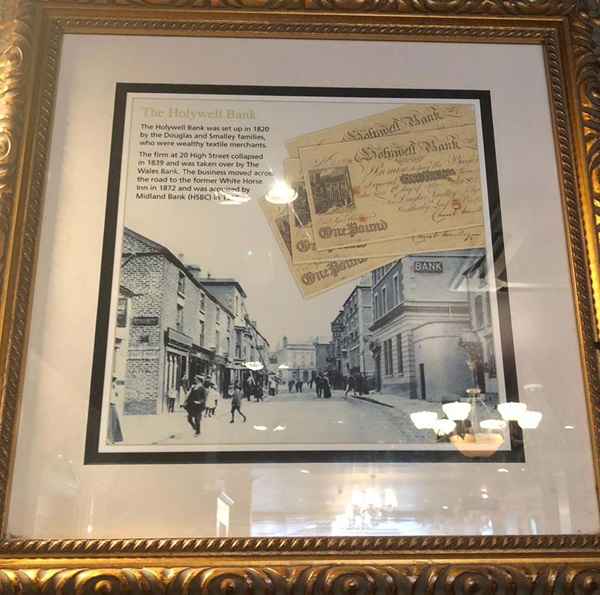
The text reads: The Holywell Bank was set up in 1820 by the Douglas and Smalley families, who were wealthy textile merchants.
The firm at 20 High Street collapsed in 1839 and was taken over by The Wales Bank. The business moved across the road to the former White Horse Inn in 1872 and was acquired by Midland Bank (HSBC).
External photograph of the building – main entrance.

If you have information on the history of this pub, then we’d like you to share it with us. Please e-mail all information to: pubhistories@jdwetherspoon.co.uk